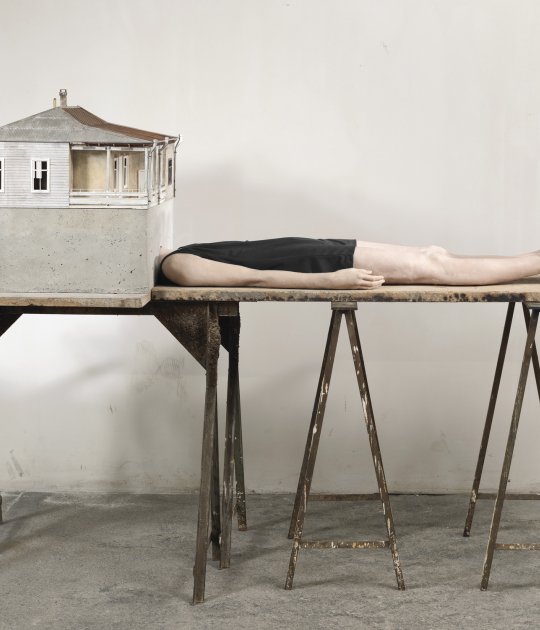For MAC VAL, Christian Boltanski wanted to create a work that proposes to experience this experience of Vertigo of time and altitude, meditation and passage of time, collaborating with Chilean architects Mauricio Pezo and Sofia von Ellrichshausen, who represented their country at the Venice Biennale of Architecture in 2008. Together they create A chapel in the garden of the museum, a place open to all, between the city and the museum, an intimacy for this work, a meeting place. For it is indeed a situation created in and for the garden. A little away, at the end of an alley, this Architecture is offered to visitors, the space of time desired, an experience of silence, suspended time and yet real, reunion with strangers.
Description of project by Pezo Von Ellrichshausen
This is a room for a continuous video projection, for the documentation of a monumental but fragile installation made by Christian Boltanski in the Atacama Desert. With two concentric cylinders and two tunnel-like extensions, this sculptural piece is meant to erode its own figure in order to re-enact an inner landscape. It is a dimly lit, opaque and seamless chamber, rough enough so as to evoke the original distant place where the installation was recorded.
The radius of the smallest cylinder is, in fact, defined both by a fine-tuned equipment and by the precise distance of an observer immersed in the projected image. The other cylinder, as a consequence of the reversible path to go from outside to outside, might be read as a leftover of the inner corner in which the recorded landscape is projected. It is somehow difficult to understand how a small building can contain a massive landscape in its modest entrails. Here, what seems to be a defensive gesture towards the surrounding garden is no other than a haven for the devious and fleeting overlap between reality and fiction.











































